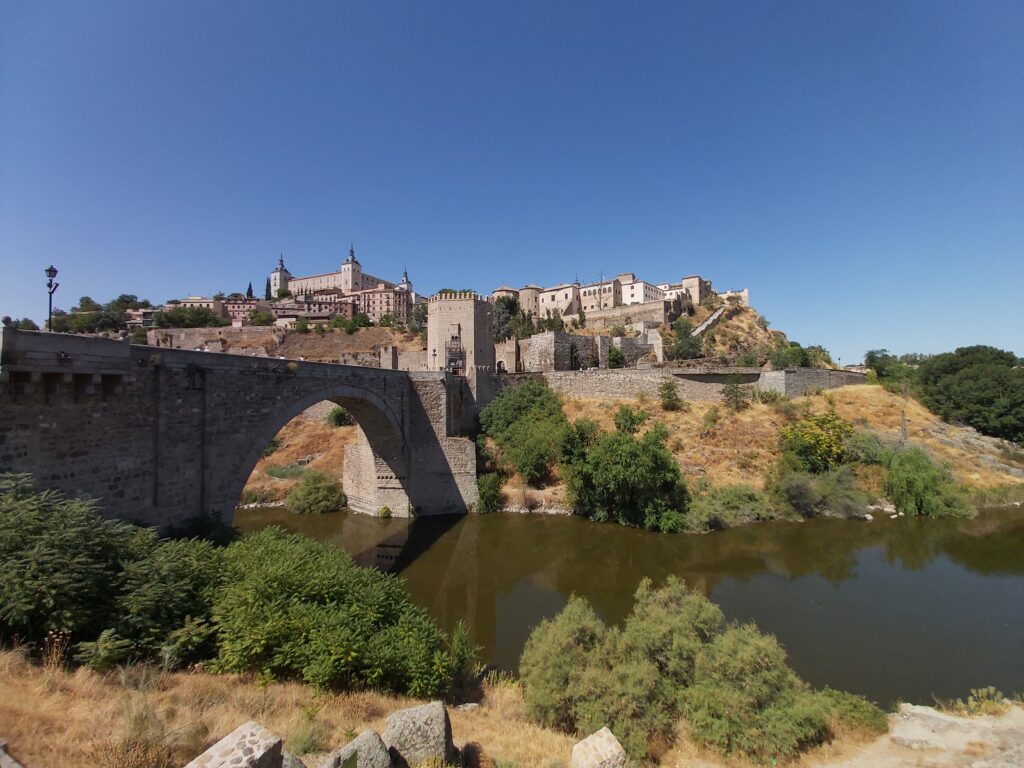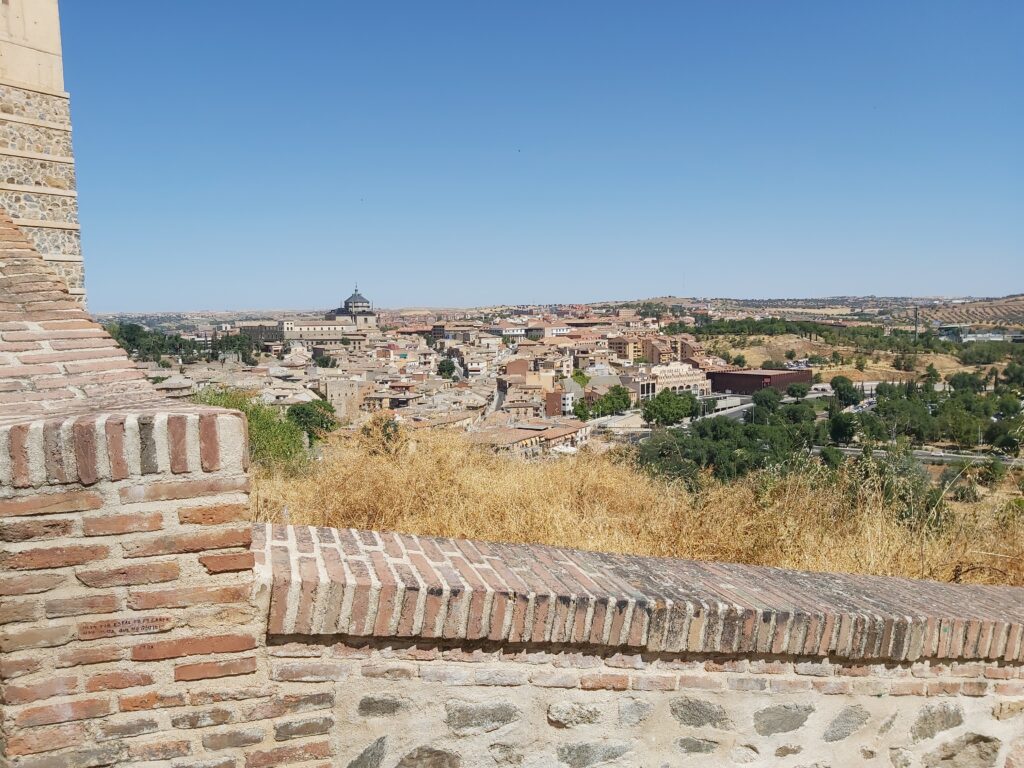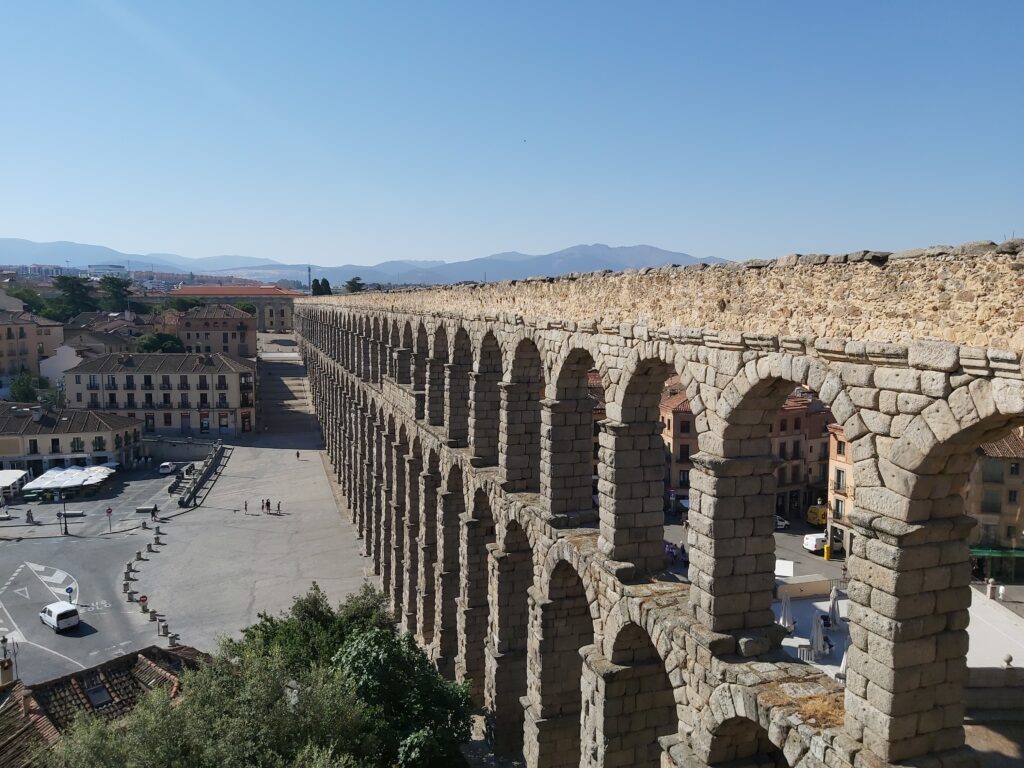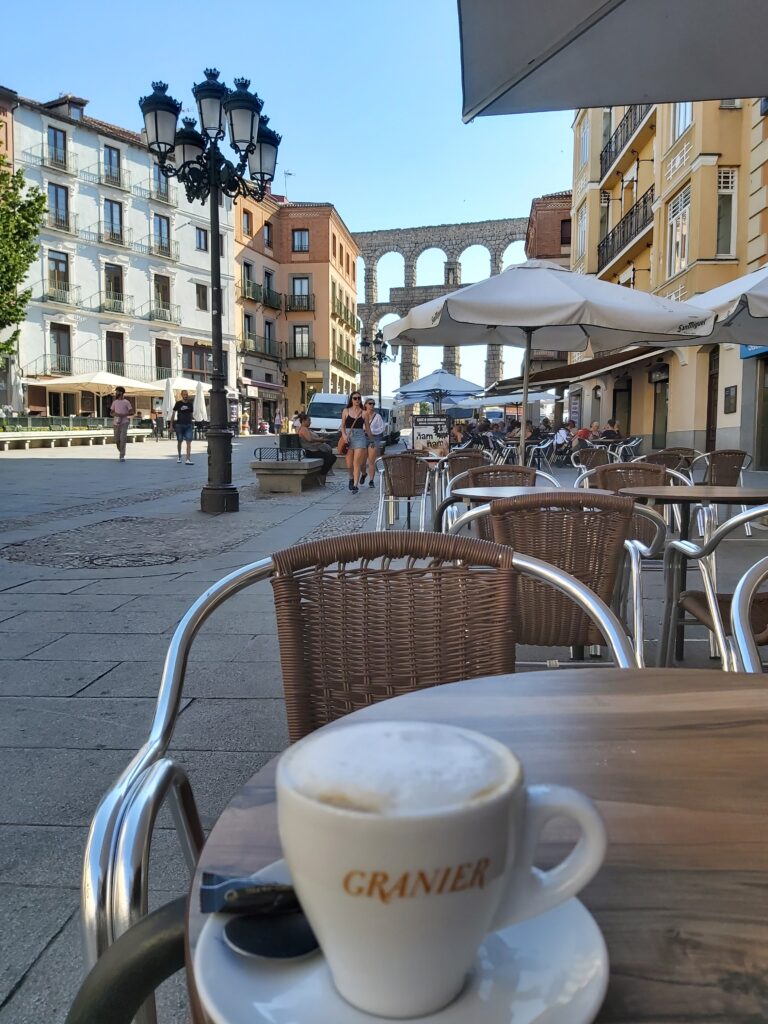
Planning stop-overs in every interesting town and village was not going to work. Slowly, painfully, it occurred to me that I had to give up that idea. What I needed were day trips. I’d rented an apartment for a month in Madrid, at a considerable discount when compared to a hotel, so why should I be shy about heading out for a day trip to nearby towns. Toledo is only 30 minutes away by train. Segovia is just an hour. In fact, even flying somewhere with just a carry-on bag would be practical. Leave all the bulk at the apartment, and just go.
Toledo is an ancient hilltop town to the south of Madrid and was once the capital of Spain. It was an easy day trip from Madrid’s Puerta de Atocha train station. From the Toledo train station, you can walk, bus or taxi up the hill. Don’t want to walk all that way, they have escalators that will take you up and down from the “new” city to the old city.
While the old city was clearly a tourist mecca, it still had plenty of local charm. Look past the shops selling everything from Marzipan (a local specialty), to watches, to swords (or at least knock-offs of the famous Toledo blades), and you’ll find great little restaurants, Tapas bars, museums and cathedrals. Sure, they have tourist prices, but they are still affordable.

The “modern” town sits below, affording views of the tourist attraction without the tourists. Makes me wonder if that wouldn’t be the place to live. I’d get all the views and tourist-supported businesses, without the tourists.
Another day trip is the town of Segovia, about an hour northwest of Madrid. Segovia is best known for the Roman aqueduct spanning the valley and it is well worth a look. The aqueduct brought water from the Frio River 10 miles into the town; so, it is much more extensive that the elevated section where it crosses the valley. And it doesn’t end when it reaches the town: water was carried below ground to the other side of the city. Brass markers plot out the unseen, underground passage.
The aqueduct is an impressive sight because of its size (about the height of a 7-story building), age (recently dated from the years 112 to 116 CE), and the fact that it still stands. I can imagine 15th century stone masons shaking their heads every time they walked past the aqueduct on the way to the quarries. What saved it, undoubtably, is that it was still carrying water until 1973. That’s a nice piece of work.

By the way, they dated the aqueducts construction based on pottery shards and a coin (a sestertius of Trajan) found beneath the foundations. Shout out to all you archeology nerds!
An interesting side note, if you’re like me, is that building an aqueduct is an exacting piece of engineering. To avoid sediment clogging the aqueduct, it has to have enough slope to keep the water moving. To avoid erosion, it cannot be too steep. Fast running water wears away the stone pretty quickly. The obvious conclusion: the aqueduct was built by aliens!
The old town of Segovia, which benefits from the aqueducts water, sits atop the hill (I’m guessing about 7-stories above the valley). Like Toledo, it is a major tourist attraction. And, like in Toledo, the tourists pay while locals enjoy the benefits. And the locals, like locals everywhere, I’m sure complain about the tourists. It’s the cycle of life.
A day trip to Toledo or Segovia is plenty to wander about and see the key sights, but an over night trip would be better. I would have loved to explore all those side streets.

